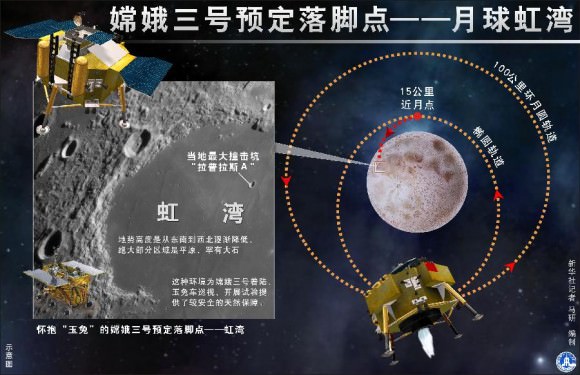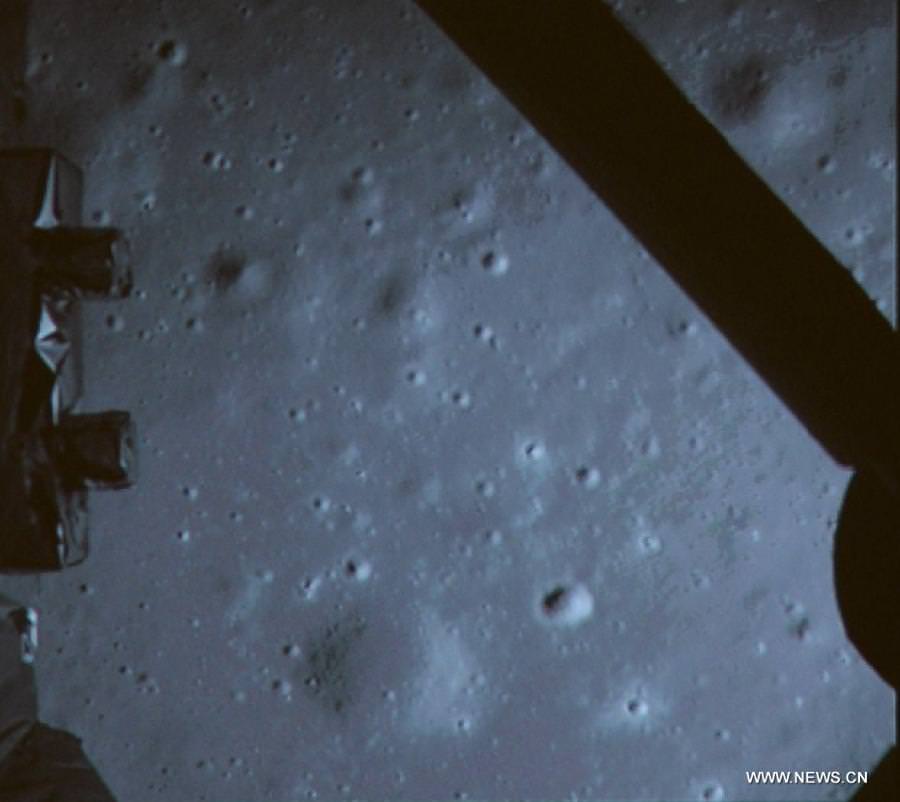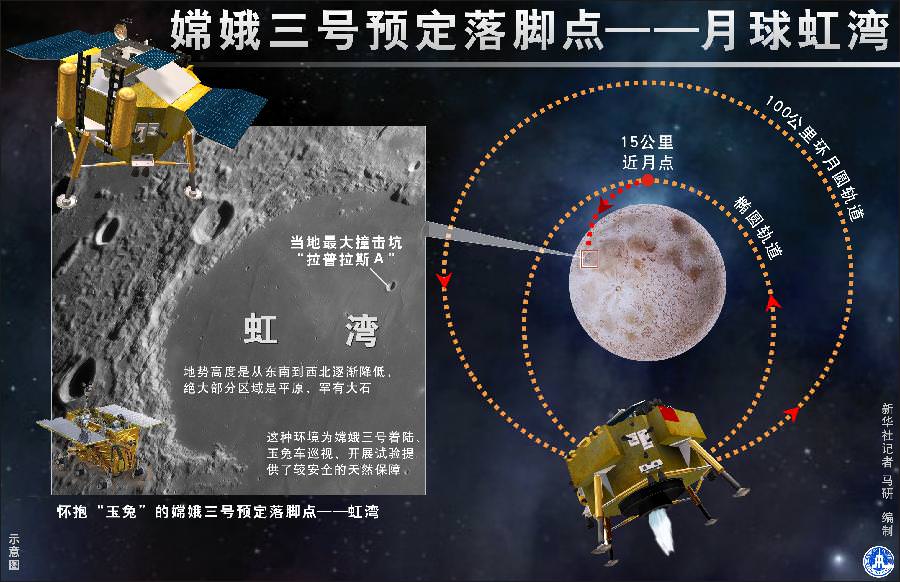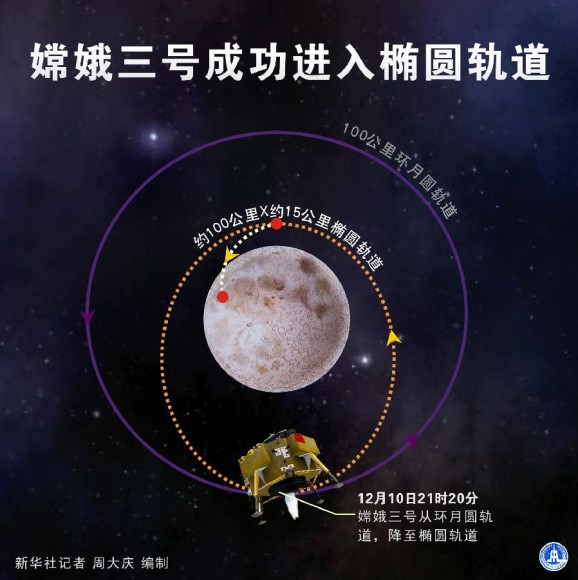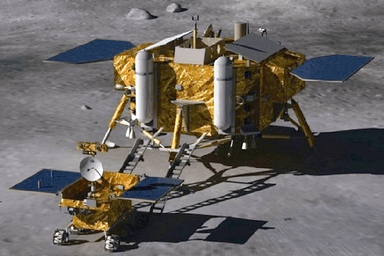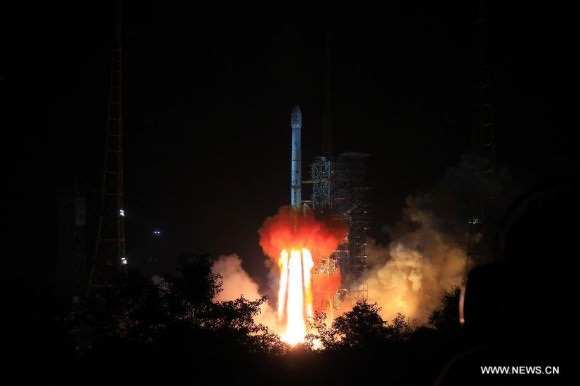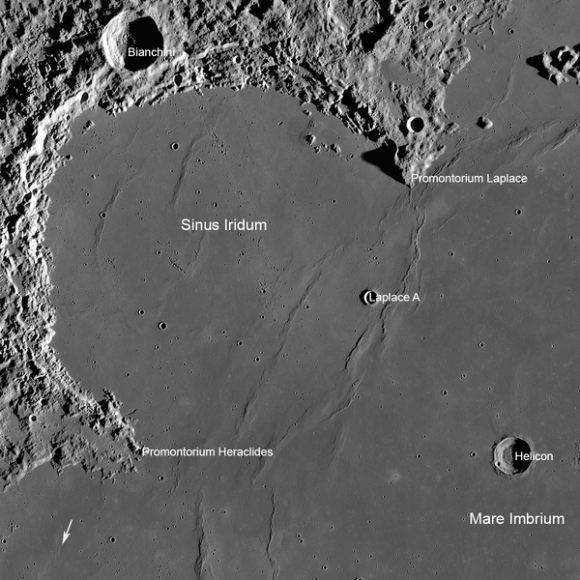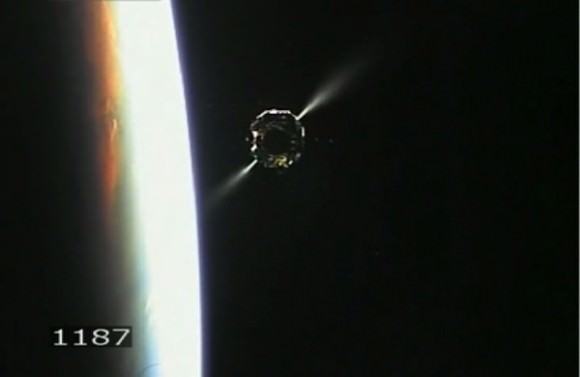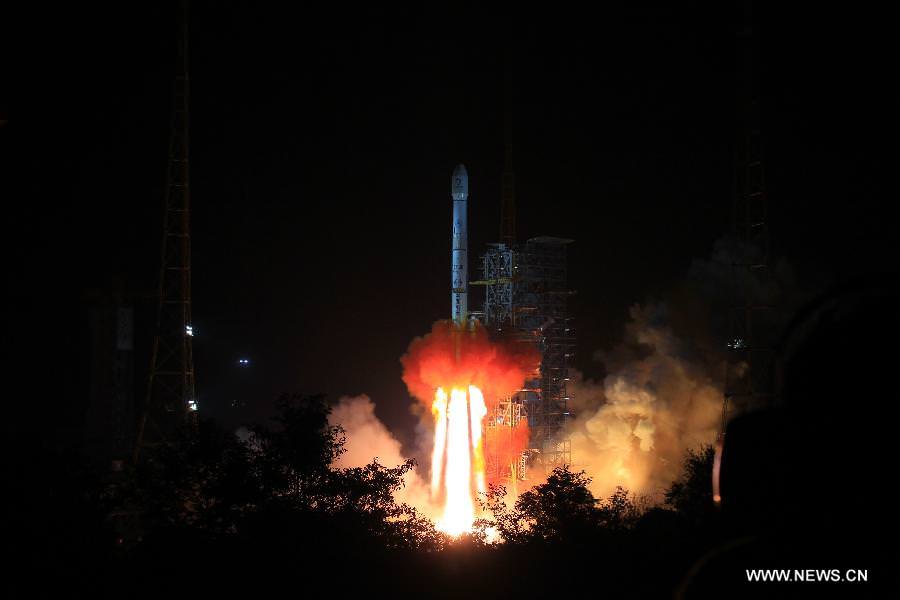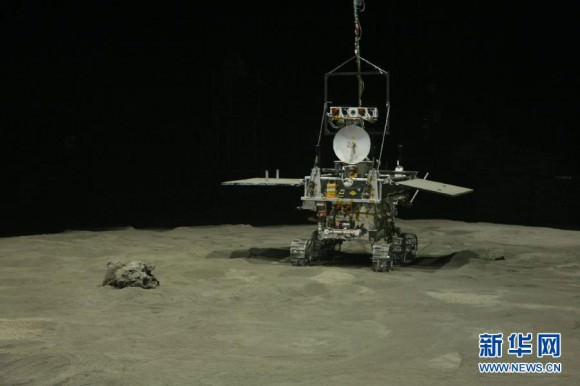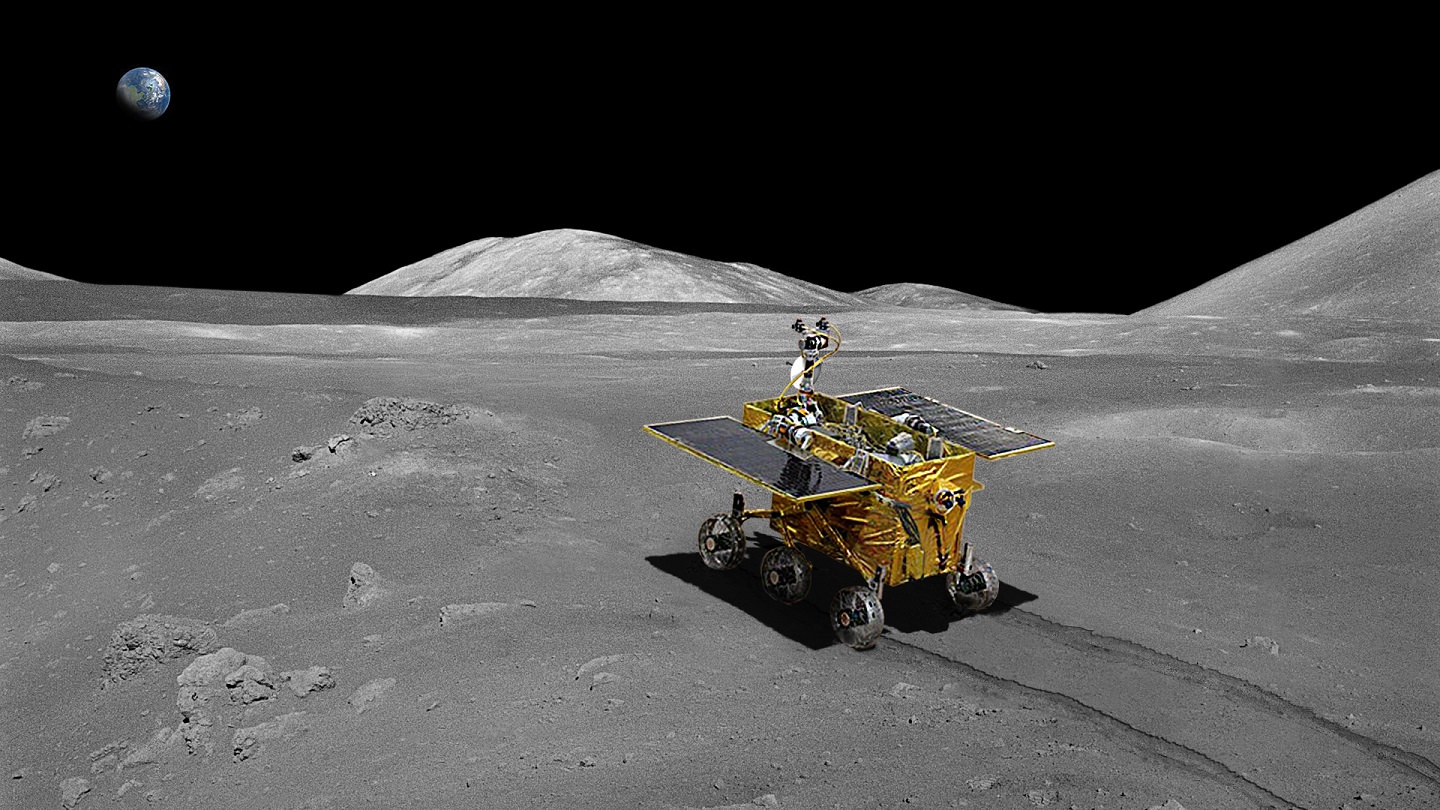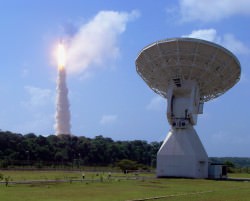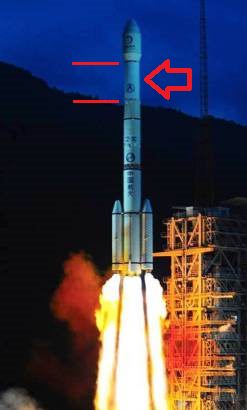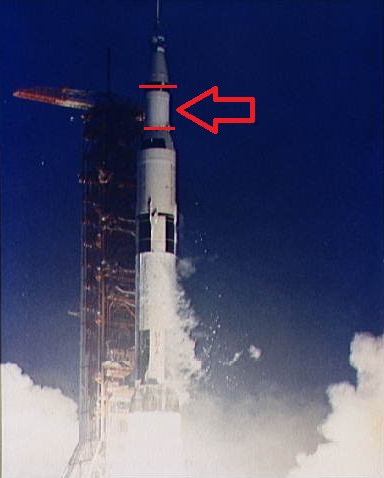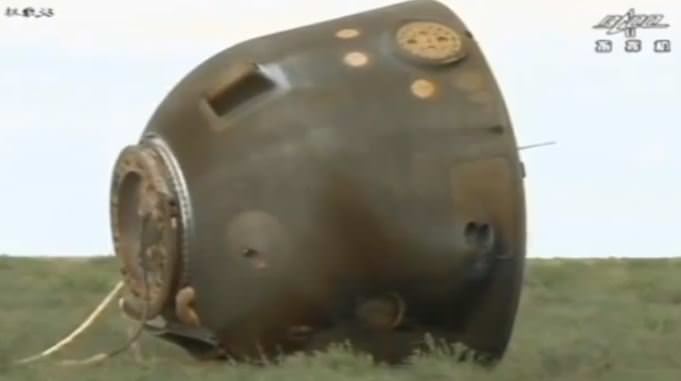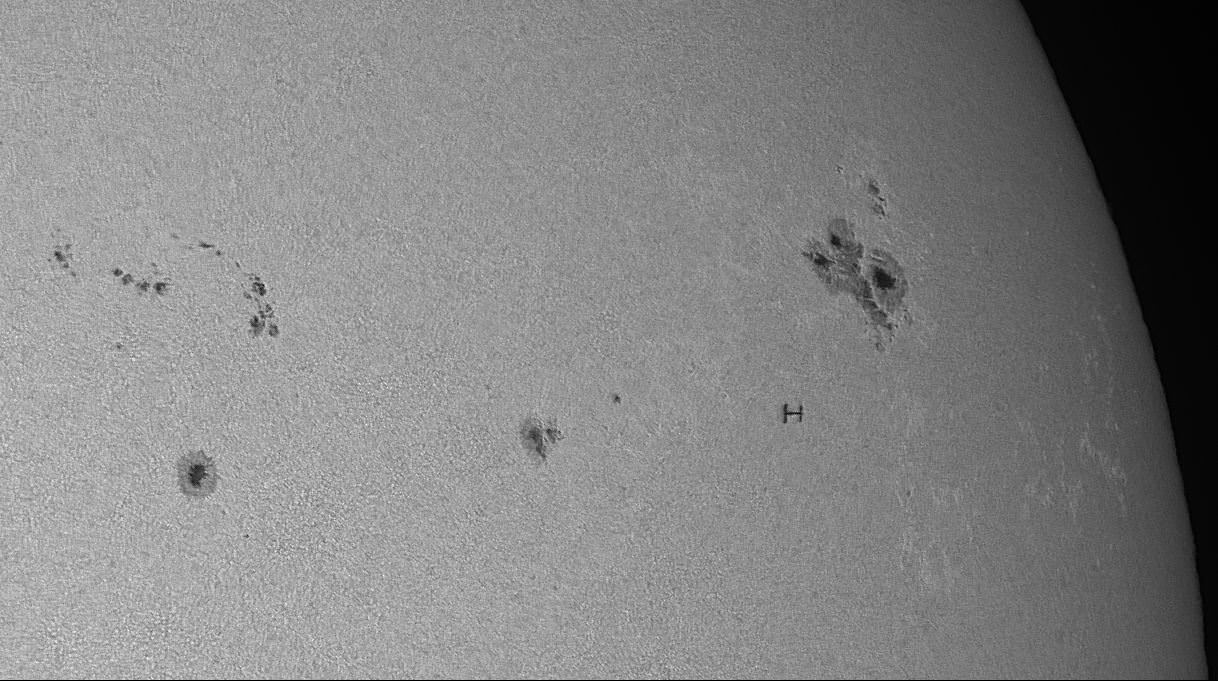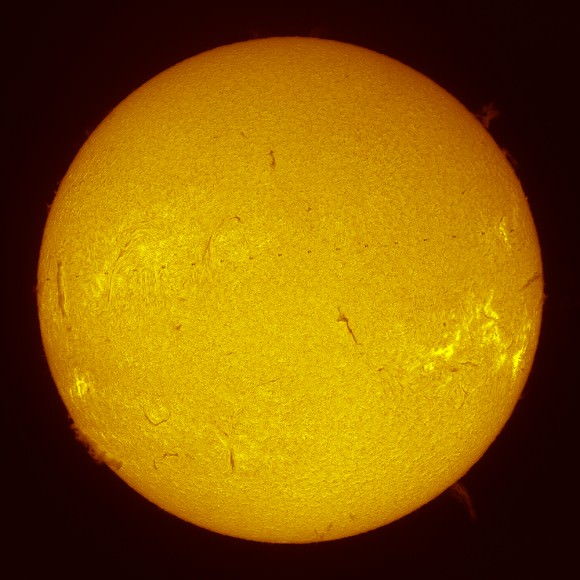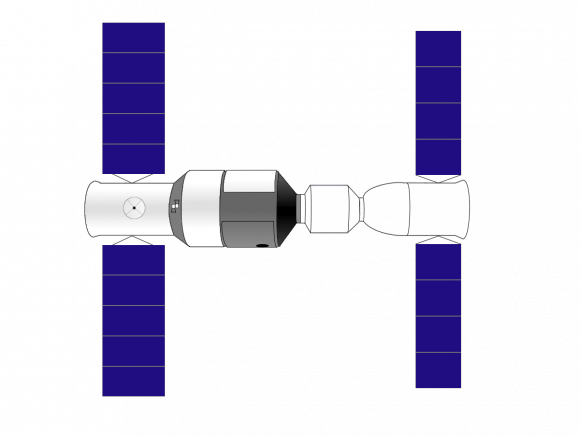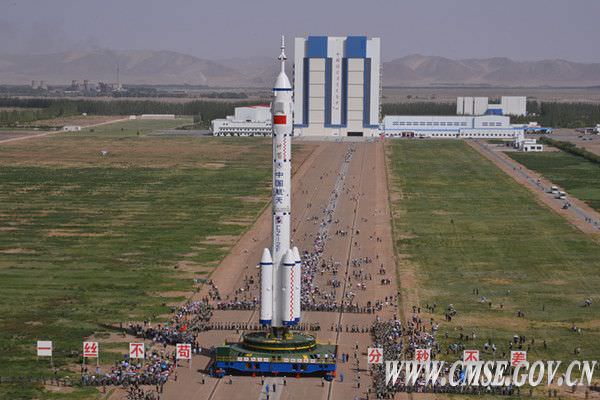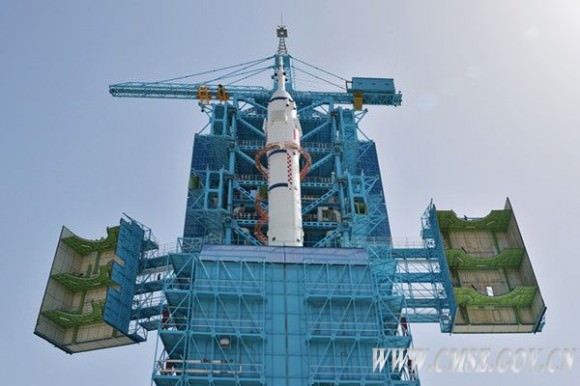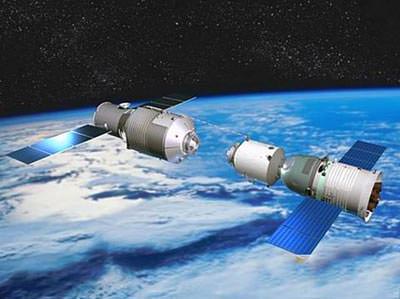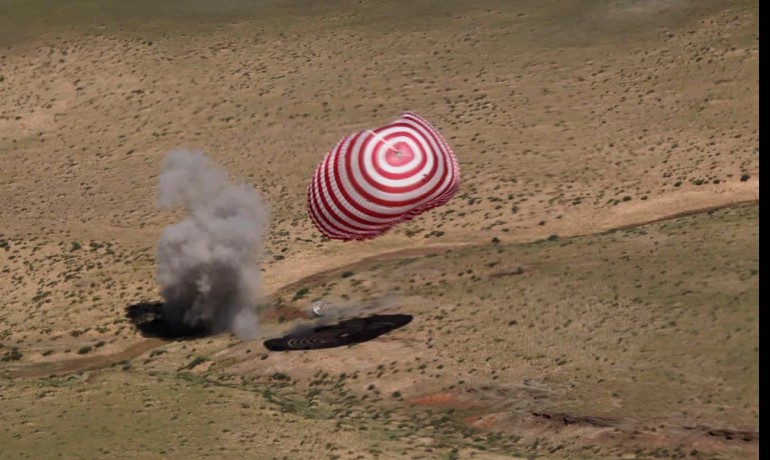Photo taken on Dec. 14, 2013 shows a picture of the moon surface taken by the on-board camera of lunar probe Chang’e-3 on the screen of the Beijing Aerospace Control Center in Beijing. This marks the first time that China has sent a spacecraft to soft land on the surface of an extraterrestrial body. Credit: Xinhua/CCTV
Story updated[/caption]
China scored a stunning, history making success with the successful touchdown of the ambitious Chang’e-3 probe with the ‘Yutu’ rover on the surface of the Moon today, Dec. 14, on the country’s first ever attempt to conduct a landing on an extraterrestrial body.
The dramatic Chang’e-3 soft landing on the lava filled plains of the Bay of Rainbows occurred at about 8:11 am EST, 9:11 p.m. Beijing local time, 1311 GMT today.
The monumental feat is the first landing on the Moon by any entity in nearly four decades. It was broadcast live on CCTV, China’s state run television network.
Note: Read my related new story with a photo gallery of Yutu’s 6 wheels rolling onto lunar soil – here
This maiden Chinese moon landing marks a milestone achievement for China and clearly demonstrates the country’s technological prowess.
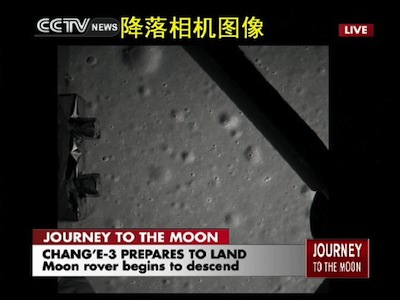 A tidal wave of high fives was unleashed by the huge teams of Chinese space engineers teams controlling the flight from the Beijing Aerospace Control Center (BACC).
A tidal wave of high fives was unleashed by the huge teams of Chinese space engineers teams controlling the flight from the Beijing Aerospace Control Center (BACC).
There was also a huge sense of relief from the nail biting tension upon confirmation of the successful soft landing following many years of hard work and intense planning.
The Chang’e-3 mission entails the first soft landing on the Moon by anyone since the Soviet Union’s unmanned Luna 24 sample return vehicle touched down back in 1976.
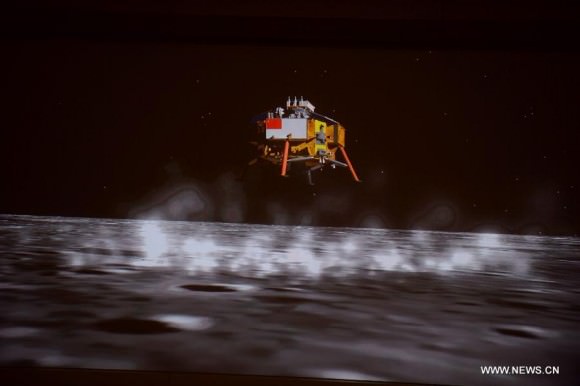
China now joins an elite club of three, including the United States, who have mastered the critical technology required to successfully touch down on Earth’s nearest neighbor.
China’s space vision also stands in total contrast to the utter lack of vision emanating from so called political leaders in Washington, DC who stymie NASA and US science at every opportunity!
‘Yutu’ could very well serve as a forerunner for testing the key technologies required for a Chinese manned lunar landing in the next decade.
In one of its first acts from the surface, the landers life giving solar panels were deployed as planned within minutes of touchdown
The Chang’e-3 mission is comprised of China’s ‘Yutu’ lunar lander riding piggyback atop a much larger four legged landing vehicle.
The Chang’e-3 lander transmitted its first images of the moon in real time during its approach to the lunar surface during the final stages of the ongoing landing operation carried live by CCTV.
A total of 59 images were received instead of the 10 expected, said a CCTV commentator.
The voyage from the Earth to the Moon began 12 days ago with the flawless launch of Chang’e-3 atop China’s Long March 3-B booster at 1:30 a.m. Beijing local time, Dec. 2, 2013 (12:30 p.m. EST, Dec. 1) from the Xichang Satellite Launch Center, in southwest China.
Chang’e-3 made a rocket powered descent to the Moon’s surface today by firing the landing thrusters starting at the altitude of 15 km (9 mi) for a soft landing targeted to a preselected area on the Bay of Rainbows.
The powered descent was autonomous and took about 12 minutes.
The variable thrust engine can continuously vary its thrust power between 1,500 to 7,500 newtons. It was the biggest ever used by China in space said a commentator on CCTV.
The variable thrust engine enabled Chang’e-3 to reduce its deceleration as it approached the moon.
The descent was preprogrammed and controlled by the probe itself, not from the ground.
A descent camera was mounted on the lander’s belly
The 1200 kg lander is equipped with unprecedented terrain recognition equipment and software to hover above the landing site and confirm it was safe. This enabled the craft to avoid rock and boulder fields that could spell catastrophe even in the final seconds before touchdown if the vehicle were to land directly on top of them.
The descent engine fired until the lander was about hovering 100 meters above the lunar surface.
After determining it was safe to proceed, the lander descended further to about 3 meters. The engine then cut off and the lander free fell the remaining distance. The impact was cushioned by shock absorbers.
The solar panels soon unfurled. They are the most efficient Chinese solar panels available, said a CCTV commentator.
The Bay of Rainbows, or Sinus Iridum region, is located in the upper left portion of the moon as seen from Earth. You can see the landing site with your own eyes.
It was imaged in high resolution by China’s prior lunar mission – the Chang’e-2 lunar orbiter – and is shown in graphics herein.
The Yutu rover is also unfurling its solar panels and mast today.
Yutu, which translates as Jade Rabbit, stands 150 centimeters high, or nearly 5 feet – human height.
It weighs approximately 120 kilograms and sports a robotic arm equipped with advanced science instruments.
On Sunday, the six-wheeled ‘Yutu’ rover with a rocker bogie suspension similar to NASA’s Mars rovers will be lowered in stages to the moon’s surface in a complex operation and then drive off a pair of landing ramps to explore the moon’s terrain for at least three months.
In what promises to be a space spectacular, the lander and rover are expected to photograph one another soon after Yutu rolls onto the Bay of Rainbows.
They will work independently.
The rover and lander are equipped with multiple cameras, spectrometers, an optical telescope, ground penetrating radar and other sensors to investigate the lunar surface and composition.
The radar instrument installed at the bottom of the rover can penetrate 100 meters deep below the surface to study the Moon’s structure and composition in unprecedented detail, according to Ouyang Ziyuan, senior advisor of China’s lunar probe project, in an interview on CCTV.
The Chang’e-3 lander is powered by a combination of solar arrays and a nuclear battery said CCTV, in order to survive the two week long lunar nights.
Chinese space officials expect the lander will function a minimum of 1 year.
ESA’s network of tracking stations are providing crucial support to China for Chang’e-3 from launch to landing.
China’s Chang’e-3 probe joins NASA’s newly arrived LADEE lunar probe which entered lunar orbit on Oct. 6 following a spectacular night time blastoff from NASA’s Wallops Flight Facility in Virginia.
Stay tuned here for Ken’s continuing Chang’e-3, LADEE, MAVEN, MOM, Mars rover and more news.
